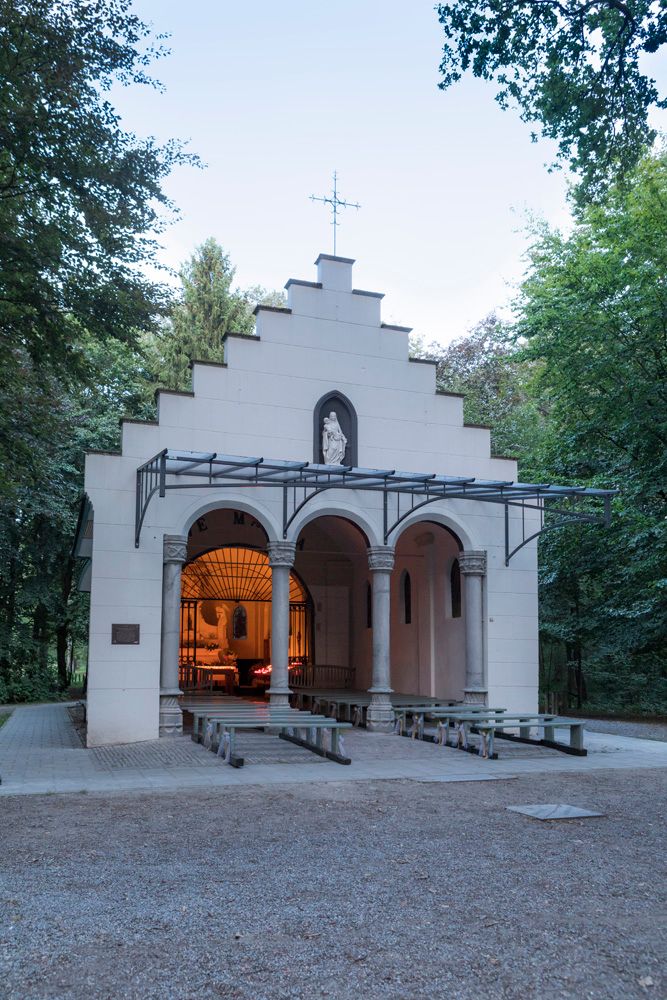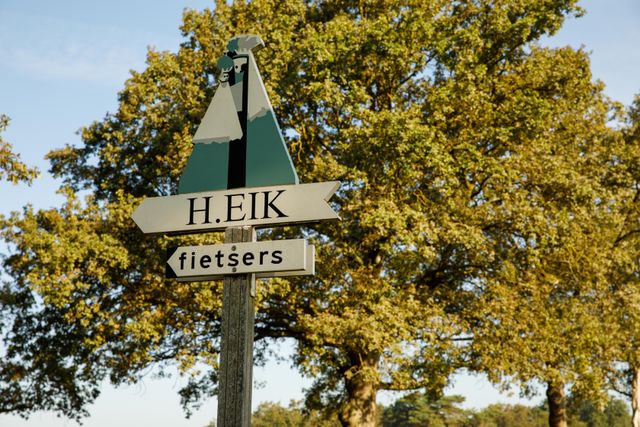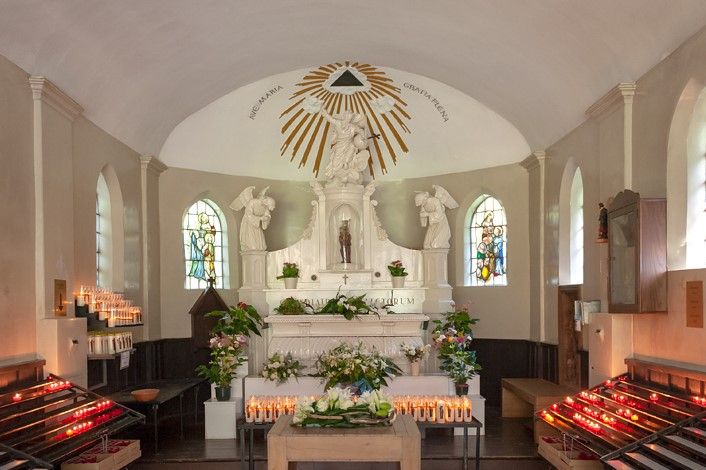Chapel of the "Heilige Eik" (Sacred Oak)

This idyllic and beautifully situated Our Lady Chapel in the woods along the Beerze is one of the most visited in Brabant with thousands of visitors every year. Light a candle and take a nice walk along the Beerze.
The legend of Mary of the Sacred Oak
In 1406, a shepherd from Spoordonk saw a statue of Mary floating upstream in the Beerze. He too…
This idyllic and beautifully situated Our Lady Chapel in the woods along the Beerze is one of the most visited in Brabant with thousands of visitors every year. Light a candle and take a nice walk along the Beerze.
The legend of Mary of the Sacred Oak
In 1406, a shepherd from Spoordonk saw a statue of Mary floating upstream in the Beerze. He took the statue out of the water and placed it reverently in a hollow oak tree. A villager, who did not think this was an appropriate place for Our Lady, brought it to St. Peter's Church in Oirschot. The next day, however, the statue had disappeared and was once again in the hollow of the oak. The villagers effortlessly managed to interpret this event as a strict instruction from the Most High himself: a chapel had to be built here in honor of Mary. So it happened. From that day on, a living devotion to Mary developed that continues to this day.
The chapel
A primitive chapel was built near the oak, a kind of turf hut with a thatched roof in which the statue of Mary was given a permanent place. When the sick came to pray and they were then healed of their ailments, the story of the miraculous statue went around and the Sacred Oak became a popular place of pilgrimage.
Petrus Vladderaccus – Peter Van Vladeracken – who became pastor of Oirschot in 1603 and immersed himself in these miracle stories around the Sacred Oak; he recorded eleven authentic healings. The chapel was regularly destroyed and rebuilt during those times. The original statue of Mary was placed in St. Peter's Church; a replica was placed in the chapel.
Canon Jan Daems van Nuenen, a scholar at the Latin School, wrote in 1606 that he had personally experienced the healing power of Our Lady of the Holy Oak. In gratitude for the fact that he had been miraculously healed from a serious illness, he had a larger stone chapel built on the site of the simple wooden chapel at the Sacred Oak. In 1612, the statue's miracle was officially recognized by Rome, making the chapel a popular pilgrimage site.
When the Protestants took control in Oirschot in 1649, these stones were demolished and the oak was also cut down. However, they failed to suppress the devotion.
At the end of the eighteenth century, the oppression of Catholics came to an end. The chapel was rebuilt in 1854 on the foundations of the old chapel.
The present chapel
In 1906 the chapel was expanded to its current form on that occasion. Material from St. Peter's Church, whose tower had collapsed in 1904, was used.
The chapel has been a national monument since 1967. The chapel of the Holy Oak has fourteen stained glass windows. All windows remind visitors of events that should not be forgotten. The original chapel section contains eight Marian windows, designed in 1947 by Jos van Dormolen. In 1951, Albert Troost designed four windows that were placed in the new part of the chapel. Two windows are reminders of the occupation of the Netherlands between 1940 and 1945. The third shows the liberation of Oirschot. The fourth window depicts the fire of the St. Peter's Church in Oirschot during the liberation in 1944. After the Second World War, the chapel of the Holy Oak became the memorial chapel for the fallen of this war. Two stained glass windows were installed in the new part of the chapel in 1983. These stained glass windows were designed by Jacques Slegers. They remember the fallen of the then municipality of Oirschot and of Oost-, West- and Middelbeers.
The front part of the chapel is always open. You can light a candle in the back part, which is open from sunrise to sunset. The chapel is maintained by a group of volunteers who are committed to preserving this beautiful monument.






